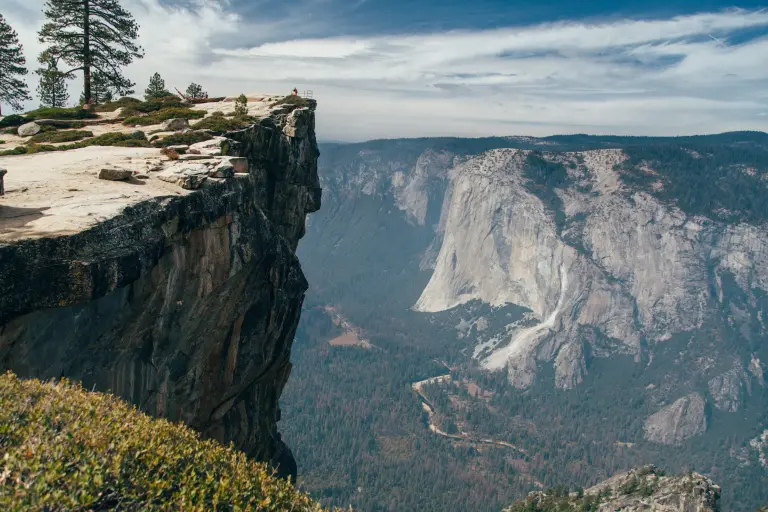While most non-Americans have heard of Yosemite and Yellowstone, America offers a wide array of lesser-known national parks from sea to shining sea. From Arches National Park in Utah to Grand Canyon National Park in Arizona to Denali National Park and Reserve in Alaska, many of the 50 states are covered. But California, with its varied landscape and natural wonders, has some of the most diverse and easily accessible national parks in the U.S.
From the north of the state to its southern base, California national parks offer breathtaking scenery, pristine flora and fauna, memorable sunsets and sunrises, and a canopy of stars at night. Our overview will help you find the best national park in California for you.
Joshua Tree National Park

Rugged rock formations, whimsical trees (that aren’t trees at all), and endless desert landscapes. It’s all in Joshua Tree National Park.
Designated as a national monument in 1936, Joshua Tree National Park near Palm Springs, California, covers 1,240 square miles and became a national park in 1994. J-Tree, as it’s lovingly called by locals, consists of two different desert landscapes: the Colorado Desert with its scrublands, cacti, and fan palms, and the somewhat wetter Mojave Desert. The latter is also home to the eponymous Joshua Tree, which is not a tree at all, but the largest known species of palm lily.
Joshua Tree welcomes more than 1 million visitors a year to hike, camp and bike. Whether you’re a beginner or an advanced climber, Joshua Tree affords rappellers more than 8,000 places to climb including the Wonderland of Rocks, Jumbo Rocks, and Indian Cove.
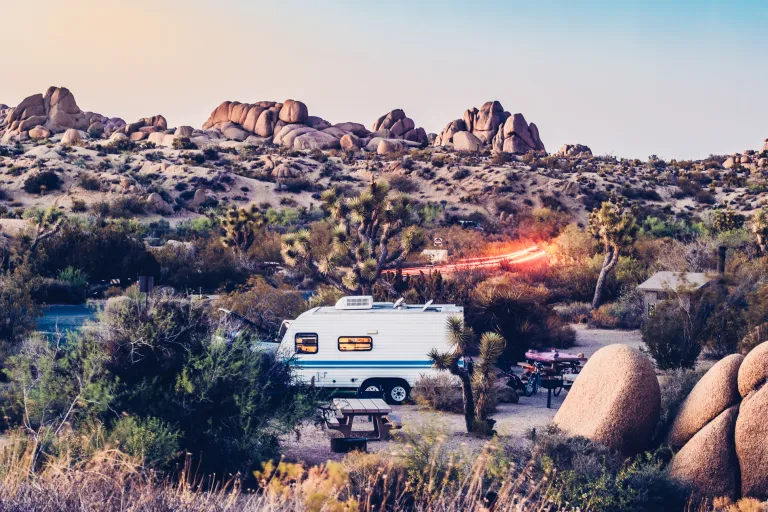
Those who are less adventurous head to Lost Horse Valley, where one can view the remnants of a mine, or 49 Palm Oasis, which boasts a watering hole, prickly barrel cacti, a palm grove, and, if you’re lucky, bighorn sheep and the orange-and-black-feathered masked trupial.
Keys View, on the other hand, offers unrivaled views across the expanses of Joshua Tree National Park. From here, you can see the Salton Sea and the Coachella Valley, where the world-famous Coachella Valley Music and Arts Festival has been held since 1999.
For a true Wild West feeling, take a guided tour of the Desert Queen Ranch of gold miner William F. Keys, who lived here with his family until his death in 1969.
Pinnacles National Park

Rock formations of volcanic origin, a Mediterranean climate, and evergreen plants characterize the landscape of Pinnacles National Park. A popular day trip from San Jose, just 80 miles away, Pinnacles is California’s youngest national park (since 2013).
You can thank the California condor for Pinnacles’ elevation from a national monument to a national park. The noble bird was nearly extinct but was introduced here in 1980 and flourished in the venerable environs. In addition to this endangered species, other birds of prey, numerous species of butterflies, and dragonflies roam the 70-square-mile, wildflower-laden park.
Formed by rock fragments that have fallen onto crevices, the branched system of rare talus caves, i.e. caves, is a special highlight of Pinnacles National Park. Grab a flashlight and explore the numerous bats in the Balconies Caves in the west of the park or the Bear Gulch Caves in the east. According to legend, a bandit hid his treasure here in the 19th century—so keeping an eye out could pay off.
For those who prefer the panoramic view and are not afraid of adventure, climb up a labyrinth of rocks to the High Peaks with rock spires up to 2,700 feet high. Once you reach the top, reward yourself with a spectacular view of the rock monoliths and the evergreen, hilly landscape.
Point Reyes National Seashore
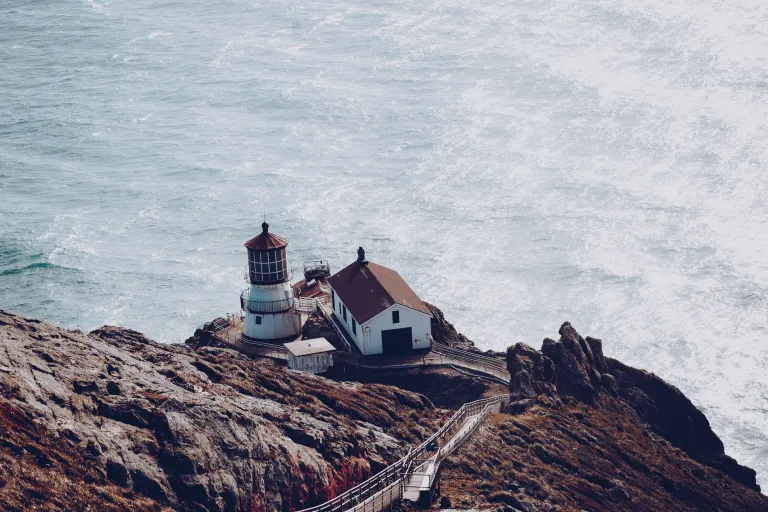
Wild cliffs, secluded beaches, and sometimes wayward fog await you at Point Reyes National Seashore, which was established by John F. Kennedy in 1962. Located on a peninsula in Marin County about 34 miles north of San Francisco, the nearly 112-square-mile protected area is reachable by local bus via the small town of Olema.
How you experience the sanctuary depends a lot on the weather, as Point Reyes is one of the foggiest areas around. On overcast days, its melancholic aesthetic attracts cineastes as the Point Reyes Lighthouse (built in 1870) and the area around it became world-famous in John Carpenter’s horror classic, The Fog (1980).
On a clear day, however, San Francisco recreationists head to Point Reyes National Seashore to visit the lighthouse and enjoy the view of the sea.
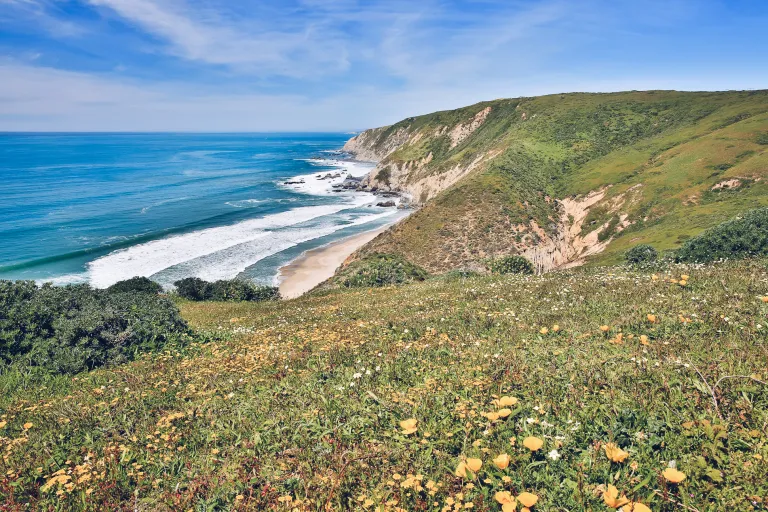
Point Reyes National Seashore marks the endpoint of the American Discovery Trail, a long-distance trail that runs across the United States. If you follow any of the 155 miles of hiking trails at Point Reyes, you’ll reach Tomales Point. Here you have a good chance of seeing the impressive and nearly extinct tule wapitis on their forays through the meadows.
At Chimney Beach and Drake Beach, elephant seals await and bird watchers head to Abbotts Lagoon—supposedly half of the North American bird species have been sighted here. Don’t leave without camping at Wildcat Beach, where you can hear the sound of the surf.
Redwood National Park
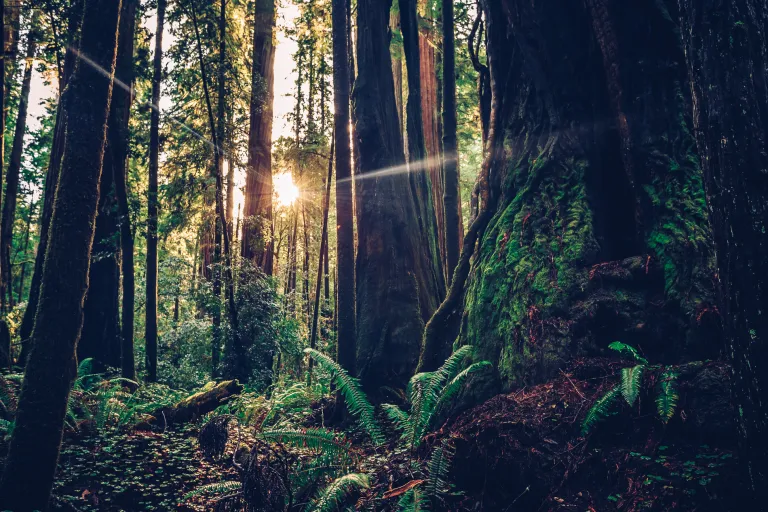
Big, bigger, biggest—Redwood National Park is all about the tallest trees on earth. Located on California’s border with Oregon about 25 miles north of Eureka, Redwood National Park is where nature’s wonder is truly on view. Get there via Redwood Coast Transit from Eureka.
After gold miners had little success in the region, the nearly 360-foot-foot giants were transformed into “red gold.” The flourishing timber industry and the onset of industrialization decimated the noble tree that by the 1960s, nearly 90 percent of them were gone. Thanks to herculean efforts by local and national preservationists, the area became Redwood National Park in 1968 and a UNESCO World Heritage Site in 1980.
Explore the eight-mile Coastal Drive by mountain bike. It takes you along the water, past a landmarked radar station that was disguised as a farmhouse to warn of a Japanese invasion during WWII. Take the turnoff to Klamath River Lookout, and you’ve reached the perfect vantage point to watch the gray whale migration. But also keep your eyes out for the majestic Roosevelt wapiti, mule deer, bald eagles, and gray foxes. Once in Klamath, visit Trees of Mystery, an adventure park with a zipline that takes you into the treetops of giants nearly 2,000 years old.

Follow in the footsteps of Jurassic Park (Steven Spielberg shot footage of the second movie here) in Fern Canyon. Home Creek flows through this narrow gorge, whose rock walls are overgrown with mighty ferns and mosses. But be sure to bring waterproof footwear to avoid paying for your IG snapshots with wet feet afterward.
Yosemite National Park
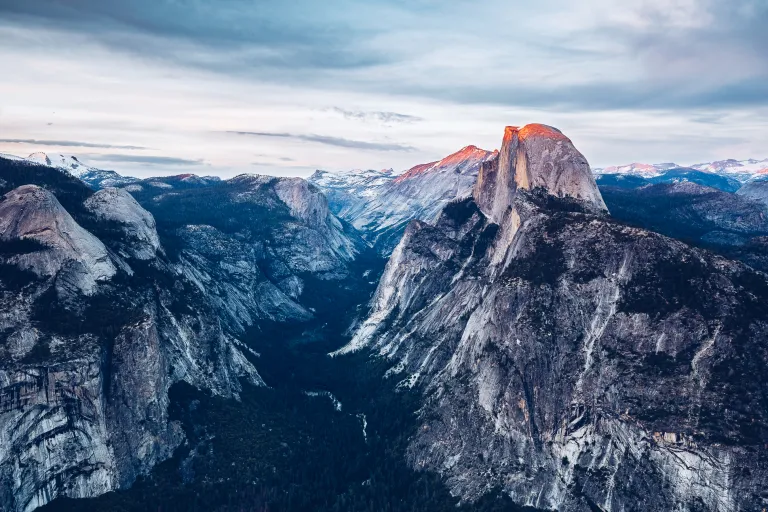
Thundering waterfalls, imposing granite cliffs, and unforgettable panoramas make Yosemite National Park one of the most popular anywhere. Located on the western slopes of the Sierra Nevada, the park was established in 1890 thanks to the relentless efforts of John Muir and is now the third-oldest national park in the world. In 1984, the 1160-square-mile park became a UNESCO World Heritage Site.
Nearly 4 million visitors per year are drawn to Yosemite Valley, aka “the unforgettable valley.” Unlike other areas, the valley, dramatically sculpted by glaciers, is accessible year-round, and a free shuttle makes getting there all the more convenient.
Travelers will find several attractions here in addition to an entire village with accommodations and stores. Museums provide information about the history and nature of the valley and myriad popular hiking tours such as the circa 214-mile John Muir Trail start here. Experienced climbers venture to El Capitan to challenge themselves and the thundering Sentinel Fall, Ribbon Fall and Yosemite Falls are worthy of a detour as well.✕California
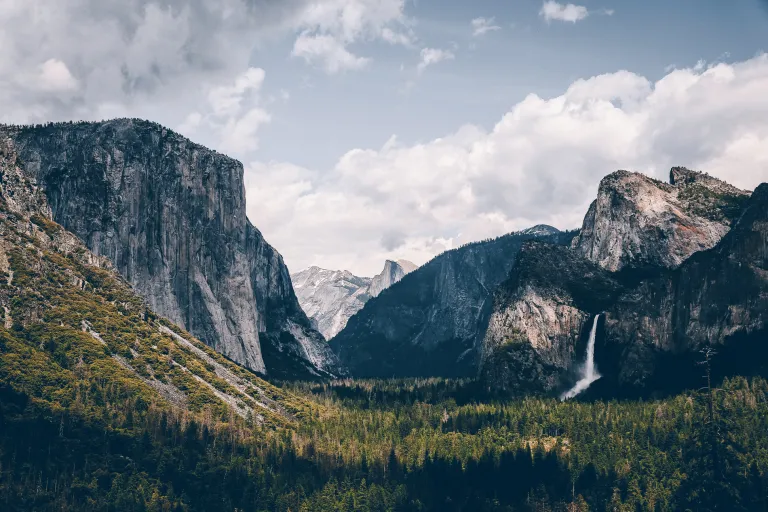
The Four Mile Trail takes you to Glacier Point, where you’ll be rewarded with an unrivaled view of the park’s highlights: Nevada Falls, the surrounding High Sierra, and some of the iconic mountains, most notably the pink-glowing Half Dome at sunset.
For those who like things a little quieter, Tuolumne Meadows, the meadowland in the park’s High Sierra, boasts camping sites. Picnic on the banks of the Tuolumne River or explore lonely mountain lakes—unforgettable snapshots not included.
